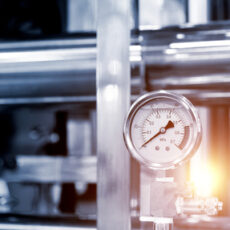 Hydraulic systems are widely used in various industries due to their efficiency and reliability. However, like any mechanical system, they can experience issues from time to time. One of the most common problems encountered in hydraulic systems is related to the hydraulic fluid. In this blog post, we will discuss some common hydraulic fluid problems and provide troubleshooting tips to overcome them.
Hydraulic systems are widely used in various industries due to their efficiency and reliability. However, like any mechanical system, they can experience issues from time to time. One of the most common problems encountered in hydraulic systems is related to the hydraulic fluid. In this blog post, we will discuss some common hydraulic fluid problems and provide troubleshooting tips to overcome them.
1. Contamination:
Contamination of hydraulic fluid can lead to various problems, including reduced system performance and component failure. Contaminants such as dirt, water, and metal particles can enter the system through various means. To troubleshoot contamination issues:
– Inspect and replace filters regularly: Filters are designed to remove contaminants from the fluid. Clogged or damaged filters should be replaced promptly to maintain optimum fluid cleanliness.
– Proper storage and handling of hydraulic fluid: Ensure that the fluid is stored in a clean and dry environment. Use sealed containers and clean dispening equipment to prevent contamination during handling.
– Flush the system: If significant contamination is detected, consider flushing the entire system with a suitable flushing fluid to remove contaminants thoroughly.
2. Foaming:
Foaming of hydraulic fluid can cause various problems, including reduced system performance, increased wear on components, and inadequate lubrication. Common causes of foaming include air leakage into the system, inadequate fluid viscosity, and high system temperatures. Troubleshooting tips for foaming issues:
– Check for air leaks: Carefully inspect all connections, hoses, and seals for any signs of leaks. Repair or replace any faulty components to prevent air from entering the system.
– Verify fluid viscosity: Ensure that the hydraulic fluid being used matches the viscosity requirements specified by the manufacturer. Inadequate viscosity can contribute to foaming issues.
– Monitor system temperature: High system temperatures can promote foaming. Check if the system is operating within the recommended temperature range. Consider installing additional cooling mechanisms if required.
3. Fluid Discoloration:
Hydraulic fluid discoloration can be an indication of degradation or contamination, which can result in reduced lubrication and damage to system components. Troubleshooting steps for fluid discoloration:
– Identify the cause: Discoloration can be caused by various factors such as overheating, oxidation, or contamination. Determine the cause to implement the appropriate solution.
– Change the hydraulic fluid: If the fluid is heavily contaminated or degraded, it is recommended to drain and replace it with fresh hydraulic fluid.
– Address underlying issues: Once the fluid has been replaced, investigate and resolve any underlying issues contributing to fluid discoloration, such as overheating or contamination sources.
4. Viscosity Issues:
Inadequate fluid viscosity can lead to poor system performance, increased component wear, and decreased oil flow. Troubleshooting tips for viscosity issues:
– Check fluid temperature: Viscosity is directly affected by temperature. Ensure that the hydraulic fluid is within the recommended temperature range. Adjustments may be necessary if operating conditions change.
– Verify fluid type and grade: Ensure that the hydraulic fluid being used matches the manufacturer’s specifications regarding type and viscosity grade. Using the wrong fluid can result in improper viscosity and system performance issues.
– Evaluate system components: Inspect system components such as pumps, motors, and valves for wear or damage that may be affecting fluid viscosity. Replace any faulty components as necessary.
Conclusion:
Regular maintenance and troubleshooting of hydraulic fluid problems are crucial to maintaining the reliability and efficiency of hydraulic systems. By understanding common issues such as contamination, foaming, discoloration, and viscosity problems, it becomes easier to identify and resolve potential hydraulic fluid issues promptly. Following the troubleshooting tips provided in this blog post should help you keep your hydraulic system running smoothly and minimize costly downtime.

